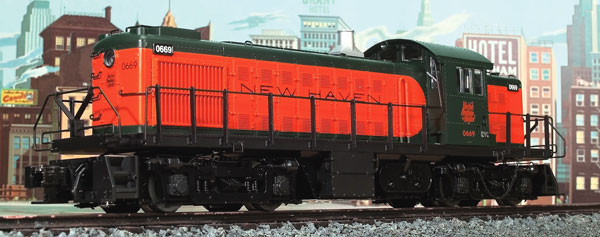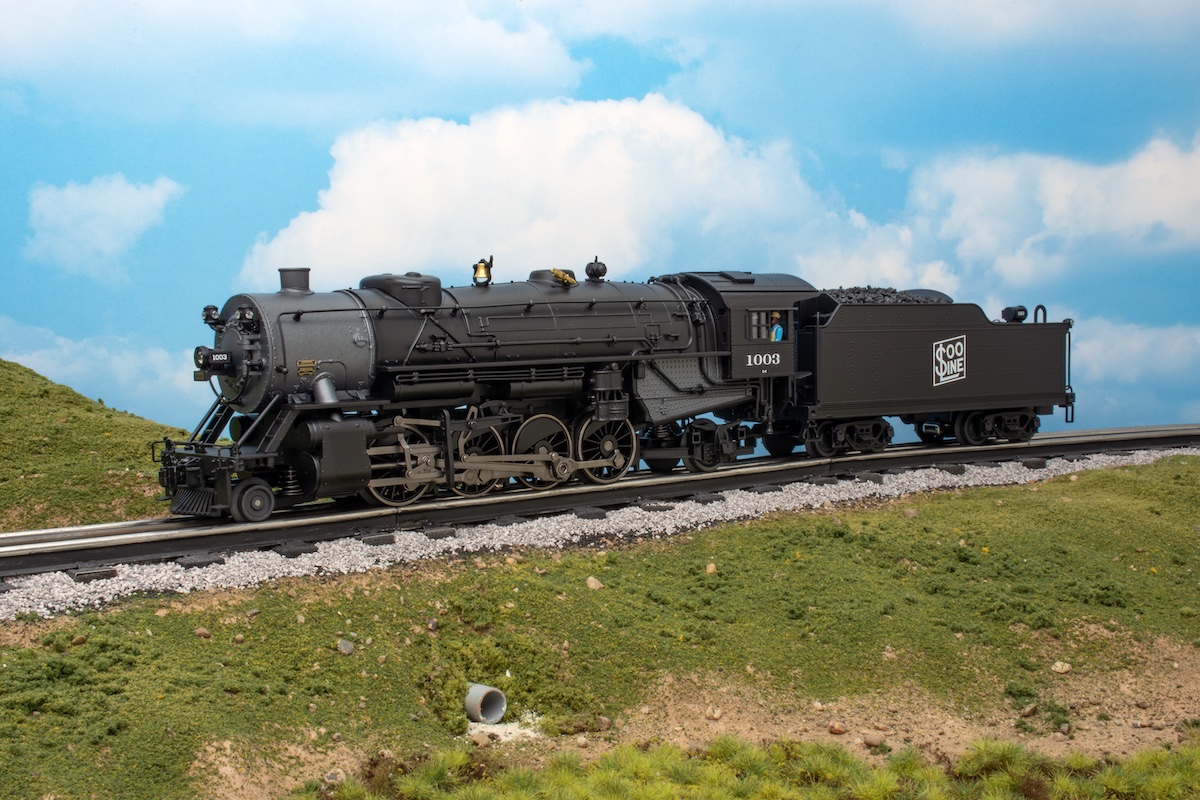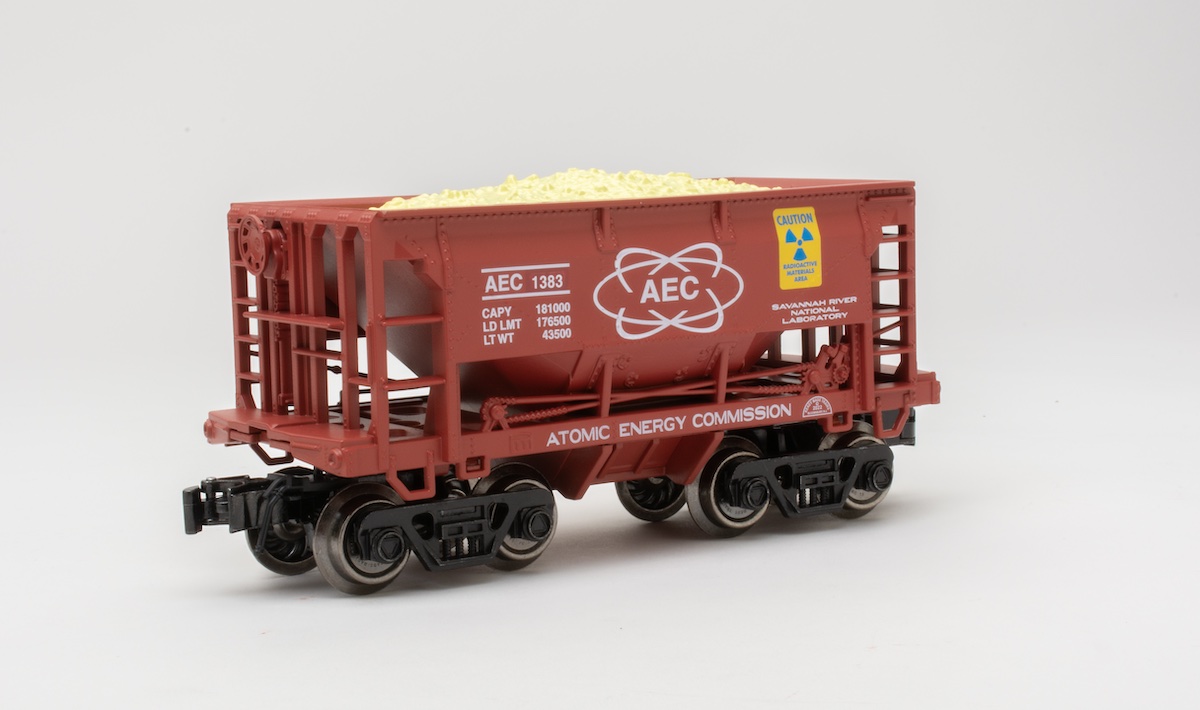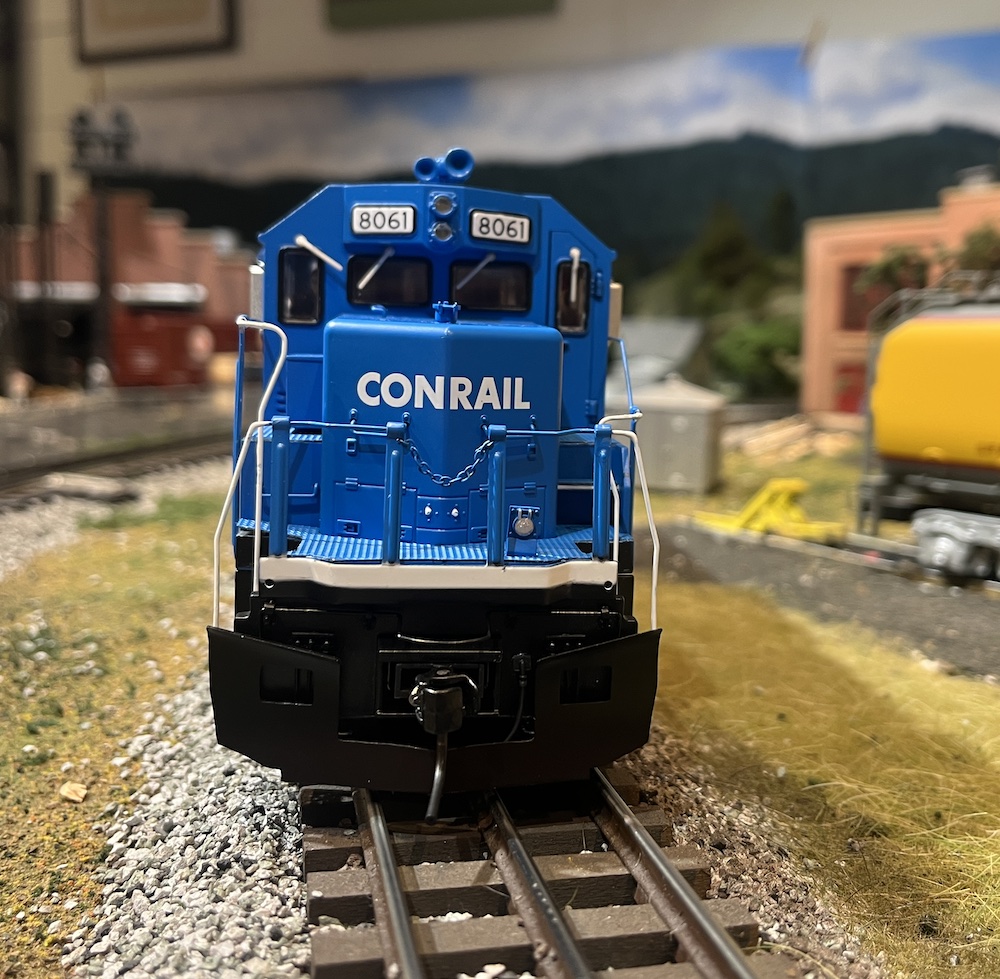Atlas O has built a scale-sized model of Alco’s first real road switcher, the RS-1. Noted New Haven railroad historian J.W. Swanberg once wrote that the RS-1 was “merely an S-2 with GRS type swing bolster trucks and a lengthened frame to accommodate a short hood with steam generator.”
True, the RS-1 used the same no. 539-T 1,000-horsepower prime mover as the switcher and shared many of its parts. But while the S-2 lived in the freight yard, the RS-1 got to stretch its legs on the main line.
The RS-1 was in production from 1941 through 1960, and more than 400 were built. Alco produced an additional 150 six-axle RSD-1 variations. The last domestic RS-1 went to the Grand Truck Western in 1957, and the last built went to the National Railway of Mexico in 1960. A few still run in America today.
The RS-1 set the stage for production of more than 1,800 RS-2 and RS-3 locomotives, plus many other variations.
The New Haven engines were numbered 0660-0671. Locomotives 0662, 0665, 0667 and 0671 survived into the Penn Central era. However, unlike a handful of RS-1s from other railroads, the New Haven locomotives never made it onto Conrail’s roster.
The model
I like Alcos. Visit my home layout and you’ll find RS-3s, an S-2, a C-420, a C-628, and even Lionel’s odd ball RSD-4. To me, Atlas O’s RS-1 is most welcome.
The model’s plastic shell is first-rate. Cast-in features include large rivets, small rivets, vents, hinges, and hatches found on the full-sized locomotive. There are even three rows of rivets crossing the cab roof. Of special note are the cast-in front sand box filler hatches. The radiator shutters on the ends of the long hood combine both angle and rivet details.
There’s even an add-on metal walkway over the rooftop radiator fan grill.
The deck has cast-in safety tread and wire handrails. There are add-on grab irons on both ends of the locomotive and two stacks – one for the diesel engine and one for the steam generator to provide service to steam-era passenger cars.
The locomotive’s trucks even include separately applied chains. Chains? On the real RS-1, the chains were connected to the brake wheel on the short hood. Turning the wheel manually applied the brakes.
Our sample arrived with one of its chains dangling, but thanks to my trusty bi-focals and an additional magnifier, I was able to re-thread it.
In the cab are two crew figures sitting in front of actual seat backs. You’ll find a nice builder’s plate outside and details like the upper fuel tank filler (used for water on steam generator-equipped models) and fuel gauge.
Beneath the locomotive, the die-cast metal undercarriage includes a nice rendering of the fuel tank and battery box. You’ll also find a bell hanging on the frame.
The Atlas O model comes undecorated and in Great Northern; Long Island; Minneapolis, Northfield & Southern; New Haven; New York Central; Rutland (a limited edition); and Santa Fe road names.
On the test track
The RS-1’s performance numbers were very good in both conventional and TrainMaster Command Control modes. Our conventional-mode low- speed average was 7.9 scale mph, while the high-end average was 103.1 scale mph. Drawbar pull for the locomotive was 1 pound, 8 ounces.
The diesel has single pickup rollers on each truck, about six inches apart from each other. The model did not experience any loss of power traveling through a variety of track switches.
The smoke generator works differently from most diesels. First, read the instruction manual. You need to tilt the locomotive short-hood down when adding smoke fluid. The smoke generator is not directly below the stack, so the fluid must flow down an angled tube. Tilting the locomotive is the best way to get the fluid where it needs to be.
The fan-driven smoke generator itself is a two-stage model from Train America Studios, sold separately under the name TurboSmoke. At idle, the fan blows at a slow speed. When the locomotive is under way, the fan speed kicks up, producing more smoke.
When there is no fluid in the smoke generator but the smoke switch (on the locomotive’s frame) is in the on position, the fan will run on and off at high speed to cool the empty smoke chamber and keep the heating element from burning out. Unfortunately, there’s no mention of the fan’s novel operation in the locomotive’s instruction manual.
To remove the locomotive’s shell from the frame for servicing, you’ll need to take out six screws. To reach some of the screws you’ll need a slim screwdriver that can slide in between the wheels and the frame. Don’t be surprised if you can’t get a straight shot. Using a magnetic screwdriver is awfully handy.
Lionel’s TMCC delivers command flexibility, and the RailSounds reproduction was clear and very Alco-like. The rough idle sounds reminded me of those in Lionel’s Alco C-420 diesel.
Now, about that RS-1 battery box hanging beneath the frame. Atlas O designers actually used that space to house the 9-volt battery that backs up Lionel’s RailSounds. Very clever! You need to remove a screw to open the battery hatch, but as with the smoke fluid, read the instruction manual first or you’ll find yourself taking apart half of the frame.
The Atlas O RS-1 is one of the nicest O gauge diesels that I’ve seen in some time. The level of detail is first rate, the can-style motors are smooth in all speed ranges, and the TrainMaster and RailSounds components help make for a fun train operating session.














